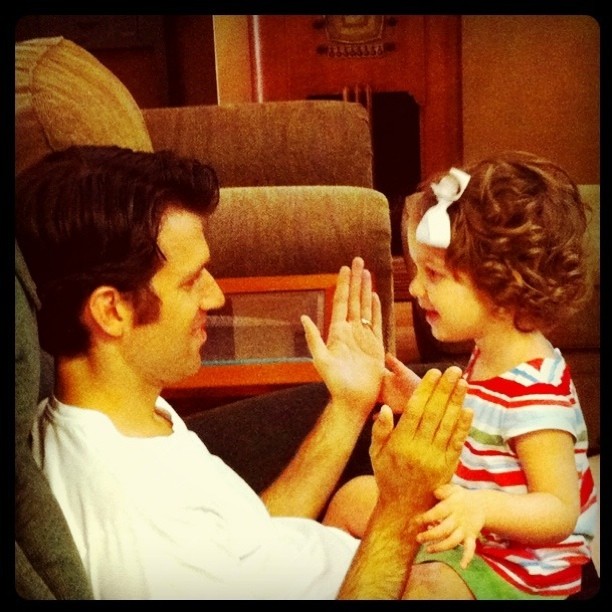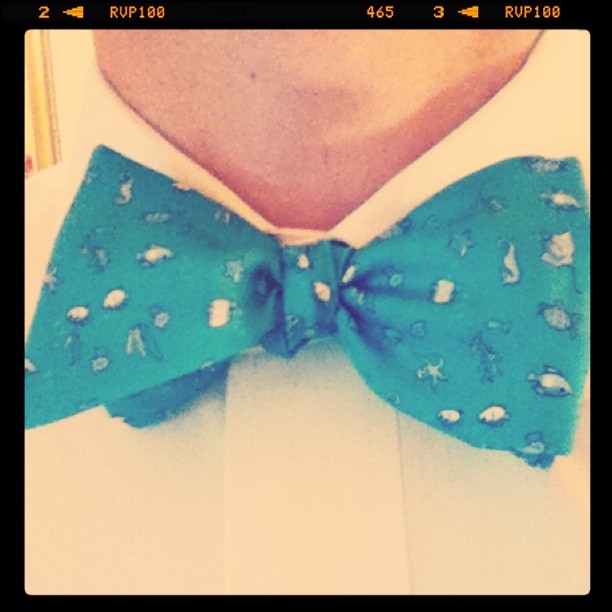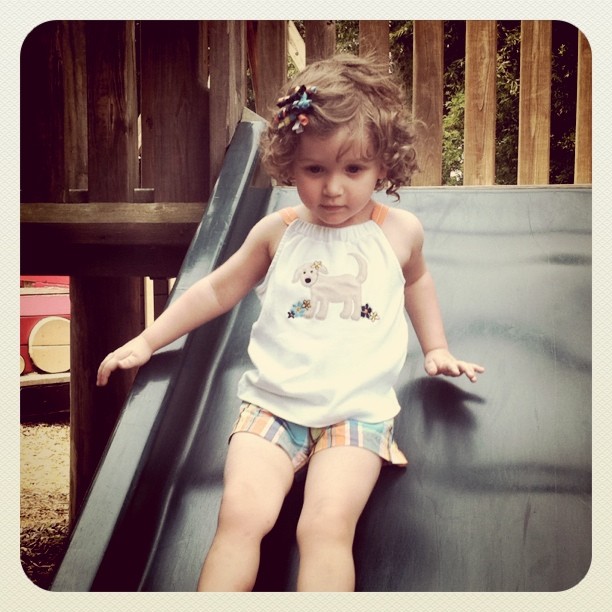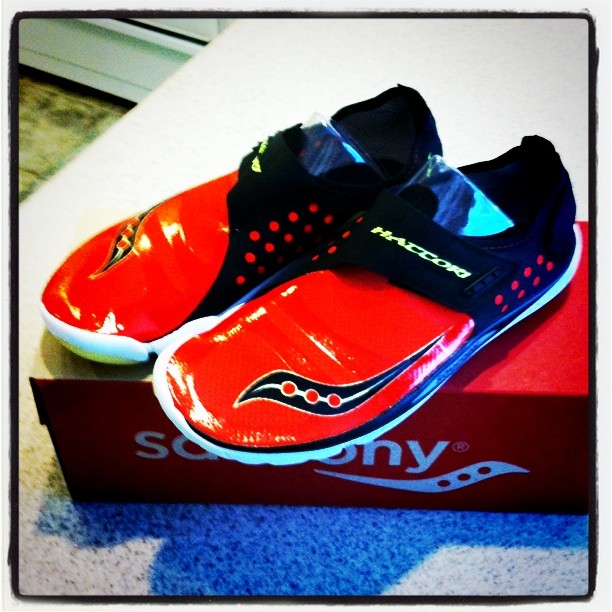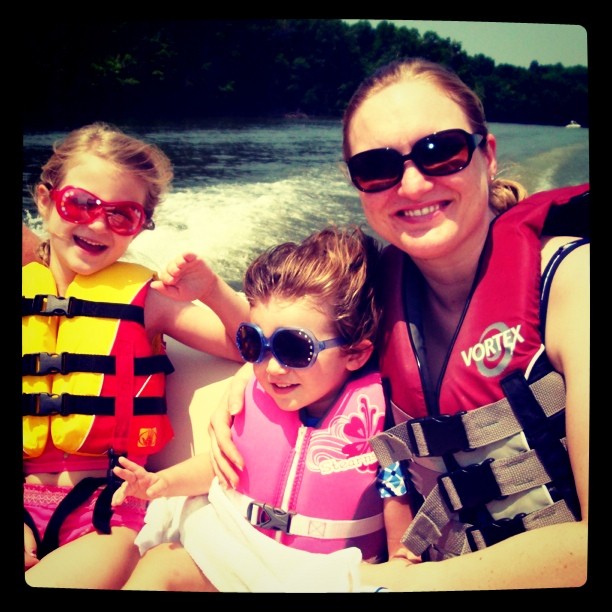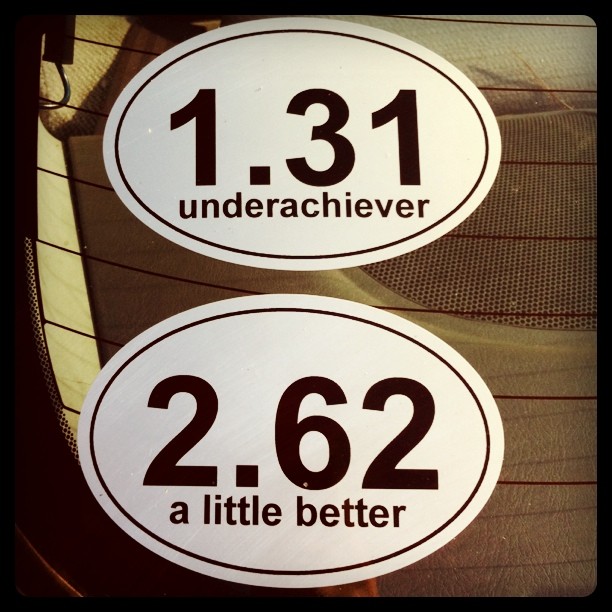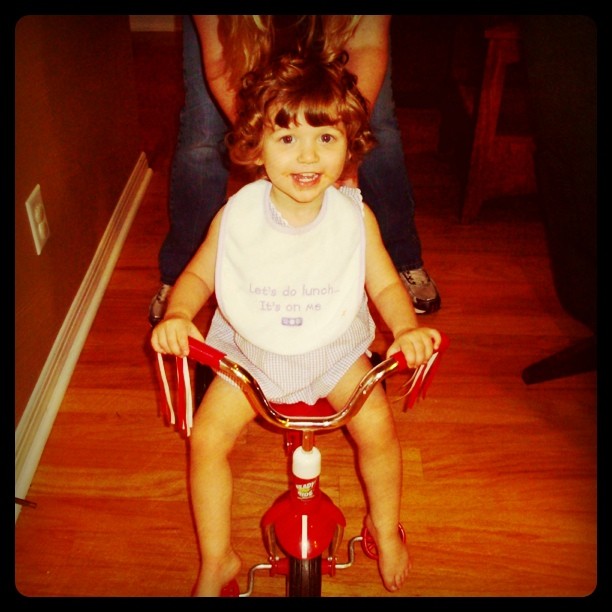My favorite comedian Brian Regan with a bit on buying a refrigerator. Hysterical!
This morning was my first chance to run in the new Saucony Hattori’s that arrived on Wednesday. The Hattori’s are Saucony’s first entry into the zero-drop, “minimalist” category. I saw these shoes last month in Runner’s World for the first time, and was able to talk with a Saucony rep about them at the 500 Festival Mini Marathon Expo on May 6th. They only weigh 4.4 oz and the fit is much more like a sock than a running shoe.
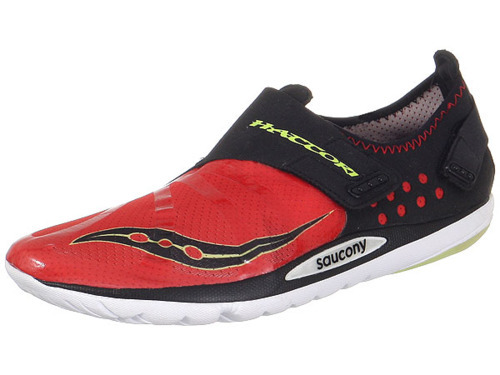
I have been really wanting to incorporate some “minimalist” running into my training program in order to strengthen my feet and lower legs and to improve my overall running form. I’ve received lots of advice about taking it very slowly, and not trying to do too many miles too fast.
My “normal” training shoe for the past 3 years has been the Nike Zoom Vomero, which is almost opposite of a “minimalist” shoe. Last fall, I added the Saucony Kinvara to my training for track days and short races. These shoes weigh only 7.7 oz, and I have now completed a 1/2 marathon in them. I’m hoping to make them my full-time training shoe later this year. For the Hattori’s, I decided to begin running in these shoes once per week on a recovery day.
Before trying out the Hattori’s, I asked a few people about whether or not I should wear running socks, and got answers both ways. I tried walking around the house with and without socks and decided to try my first run barefoot (though I did use some Body Glide in potential blister areas).
My goal today was to do 3 to 4 very easy miles after a fairly hard track workout last night. I also selected a route that was flat so as to not put any extra stress on my feet and lower legs. As I started out, it was immediately noticeable that I would need a very short stride to keep from pounding my feet. The shoes actually felt really good, and running in them was quite enjoyable. The fit is snug, and is enhanced by the velcro straps at the top and the heel.
They do have a barefoot-type feel to them, though they have a little more cushioning than I was expecting. It was obvious that my feet were much more involved in the running motion, and my lower legs began feeling fatigued by the end of the third mile.
During mile 4, I felt hot spots on the back of my left heel and the top of my left big-toe. The heel turned out to be a small blister, and the toe just has some minor irritation. This was a little disappointing since I really enjoyed running without socks. However, I did miss both of these spots with the Body Glide that I applied before the run. Not sure if I’ll switch to socks or not for next week’s run in the Hattori’s, but definitely plan to continue using them. If I do add socks, it will have to be something that is super, super thin. Anybody have suggestions for a super thin running sock?
Overall, the experience was very positive, and I really like the shoes. It is now 11pm, and my calves are noticeably sore which is quite unusual for an easy, 4-mile run. Really excited to add these to my shoe rotation.
UPDATE: You can find my updated impressions on the Saucony Hattori by going HERE.
Jesus was as Divine as if He had never been human, and he was as human as if He had never been divine.
There is no such thing as bad weather, just soft people.
Comedian Brian Regan’s bit on preparing Pop Tarts … worth a watch.
Thank you very much….I’ll follow you in return, and look forward to reading your posts.
Earlier today a good friend of mine asked me for some advice on dealing with shin splints. I put together a list of things that have worked for me in the past and sent it over to him. A little while afterword I thought this would also be a good thing to share with others.
Shin Splints are often caused by increasing your running mileage too fast without properly cross training the muscles opposing the calf…therefore creating a muscle imbalance that leads to inflammation and discomfort.
You can reduce the inflammation by rest / ice / NSAIDs (advil, alleve, etc.), but strengthening exercises for the muscles in the shin will also help dramatically. Here are a few suggestions:
1. While sitting, tap out the ABCs with your big toe. You can do this while you are working, eating, whenever
2. Walk around on your heels with your toes off the ground. Do three sets of 25 steps. One with toes pointed in, one pointed out, one straight.
3. Lean against a wall, lift one leg a little off the ground, and then slowly flex your toe toward your shin (Dorsiflex) 25 times. Repeat with other leg.
4. Same as #3, but do it rapidly
5. Lay down flat on your back, and flex both feet (Dorsiflex), and hold for 5 minutes.
Hope this is useful for anyone else that is struggling with shin splints.
I appreciate all of the response to my question a couple of days ago regarding incorporating barefoot type running into my training. As a follow-up. I have been using the @Saucony Kinvara since last fall and am slowly transitioning to it as my full-time trainer. For those of you who run in Kinvaras….
- Am I negating the benefit of the Kinvara if I replace the insole? I typically use the Lynco 405, and have been using this with the Kinvara.
- How many miles should I expect out of the Kinvara? I have only been using them once or twice per week so far, and my first pair has around 200 miles on them. They appear to still be in good shape, but I’ve read a lot about durability issues.
- I have completed a 1/2 marathon in the Kinvaras, and they were great (Though my feet were sore the next day). Has anyone tried using them in a full marathon? If so, what are your thoughts (trying to decide about using them at Chicago in Oct)?

